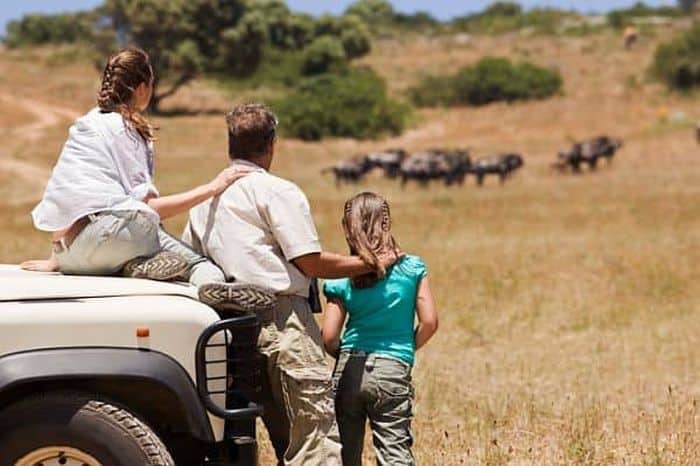1) NAMDAPHA WILD LIFE SANCTUARY(Arunachal Pradesh , India)
The break of dawn is a little earlier here filling the atmosphere with the shrill chatter of Hoolock Gibbons. The sky is almost blocked out of visibility owing to a thick canopy of dark green foliage spread overhead atop thick tree trunks that rose 50 meters up with an attitude of defiance not letting the blazing rays of the sun penetrate much deeper, hitting the moist ground below caked with a marshy mix of vegetation. This is the legendary wild life sanctuary of Namdapha perched in the Eastern periphery of Arunachal Pradesh bordering the impenetrable jungles of Myanmar. The mix of flora and fauna is practically awesome, and the forest cover just crawls with wildlife ranging from prowling tigers out for a kill, Himalayan black bears, herds of trumpeting Indian Elephants ,deadly snakes, Hoolock gibbons, gayals, the fabled red Pandas and a host of birds and insects.
The chief attraction of this virgin piece of forest cover lies in the fact that it has not evolved much from Prehistoric times. Namdapha has the distinction of being the only reserve forest that is a home to all the four species of predatory felines. They stealthily roam over altitudes ranging between 600 to 6000 meters. The tigers and leopards are confined to the plains while snow and clouded leopards could be seen higher up beyond the permanent snowline. The tribal population of Namdapaha is an amazing piece of anthropological experience. Once dreaded headhunters, the Wanchos and Singfos are the two most fierce and warrior like tribes dominating the region. Now their boiling blood had been pacified and the light of modernization has its impact over the thoughts and philosophies guiding their lives. They are excellent craftsmen and their group dances command rapt attention. Namdapha is accessible by car or bus ride from Dibrugarh airport in upper Assam. Deban bungalow located right in the middle of this forest offers a cozy stay answering the needs of an adventure freak.
2) Modjadji Cycad Reserve Forest (Limpopo, South Africa)
This reserve forest perched high up in the mountainous terrain of the Lobedu close to Duiwelskloof in South Africa is famous for the primitive and the largest Cycad specimens in this planet. It is a home to one of the most charming spread of prehistoric vegetation that once had been the prime fodder for prehistoric mammals and reptiles as supported by paleontological and geological studies. This region is inhabited by the matriarchal Modjadji tribe and their female dominated culture tradition and art work are sure to fascinate the visiting tourists. The cycad vegetation grows in abundance well protected down the generations of the Modjadji clan. This vegetation has an iconic value and is sentimentally attached to the Modjadji cult and values of life. Among the faunal population, one can see herds of blue impalas, wildebeests, bush bucks, waterbucks grazing across the wonderful terrain with an astounding collection of over 160 species of birds. Kruger National Park is within a reach of 20 kilometers and is famous for large game comprising of lions, elephants, leopards, hippos, cape buffalos, elephants and a large collection of wildlife species. It is well worth an adventure trip for a jungle enthusiast to go for.
3) D ’Aguilar National Park (Queensland , Australia)
Located in Queensland Down Under, this vast stretch of eucalyptus woodland is roughly located at a distance of 30 kilometers Northwest of Brisbane far up north to the park is where Mt Mee is located, a mountain cum suburb known for the plentiful availability of red cedar timber. Spectacular gorges and subtropical rainforests give this national park a tremendous tourist appeal. Many of the forested sites inside the park famed for setting up bush camps are accessible only on foot. A wonderful mix of lowland rainforests, eucalyptus forests ,arid lands, heaths and ridges lain with a thick cover of grass land conjures up a magic appeal and one can’t help being assaulted by the feeling that he has been transported back into a prehistoric world dominated by giant lizards.
The forest is a home to more than 240 species of exotic birds and is an ornithologist’s dream destination. The laughing Kookaburra, the magnificent bird of paradise, the marbled frogmouth, the bush hen and black breasted Button Quail are just a few members from a large flight of avian family that would just take a tourist’s breath away with their color, charm and vibes. Of the bizarre Aussie mammals, one can find the fabled duck billed platypus, the Brown Bandicoot, fruit bats and off course the Koalas and the Kangaroos.
4) Sherwood Forest (known as Sherwood forest NNR located 25 kilometers north of Nottingham, England)
This legendary greenery thick with birch, ancient oaks, rowan, holly and hawthorn amid a primitive setting works up a magic spell. The reminiscence of the adventures of Robin Hood and his band of outlaws ruling the green glades and instilling awe and reverence among the local rustic life will take you back to those daring days .This prehistoric green paradise on earth is accessible by cars and buses, rail route and even on a cycle ride .A large population of exotic birds makes this forest come alive with their random coos and twitters. They include tawny owl, green and spotted woodpeckers, nightjars and redstarts. Rabbits, vixens, hedgehogs, stoats and a number of bat species complete the mammalian population. Besides beetles, exotic snails, worms, butterflies and moths, a number of nameless insects are found in abundance whose identity could be traced back to an entomologist’s lexicon .There is a fascinating population of lizards and toads as well. Thick matt grass, lichens and moss covered ground enhance the appeal of the region coaxing the tourist for repeat visits.
5) Kinabatangan Wildlife Sanctuary (Sabah, Borneo)
Cut across by the Kinabatangan river, the longest of its kind this wild life sanctuary gives a genuine feel that you had been travelled back in a time machine and placed onto a primitive environment where the modern civilization and the internet driven global advancements seem secondary and subjugated to the more primal and ancient world where harsh nature rules with all its might and pristine charm. Dominated by swamps and mangroves supporting a rich wildlife the forests abound with Orangutans, Bornean elephants, snakes, crocs and other reptiles and a swarm of amazing bird population. The dayaks are the local natives who haven’t evolved much from their primitive lifestyle and bring up a picture of wild adventure amid a prehistoric setting that appeals the adventure buff in great measures.


